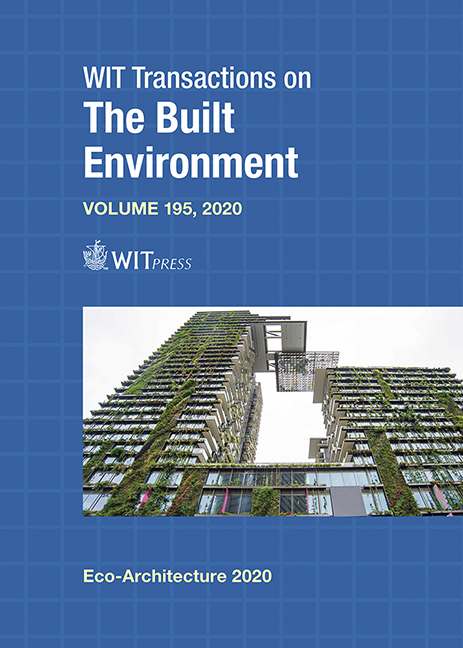THERMOPHYSICAL AND MECHANICAL PROPERTIES OF COMPRESSED EARTH BLOCKS CONTAINING FIBRES: BY-PRODUCT OF OKRA PLANT AND POLYMER WASTE
Price
Free (open access)
Transaction
Volume
195
Pages
13
Page Range
149 - 161
Published
2020
Paper DOI
10.2495/ARC200121
Copyright
WIT Press
Author(s)
PHILBERT NSHIMIYIMANA, CÉSAIRE HEMA, OUSMANE ZOUNGRANA, ADAMAH MESSAN, LUC COURARD
Abstract
Municipal wastes such as water sachets and agricultural by-products in Burkina Faso need proper management to limit their hazards to the environment. This study investigated the effect of incorporation of fibres from agricultural by-products (okra plant fibre) and water sachet wastes (polymer fibre) on thermophysical and mechanical properties of stabilized compressed earth blocks (CEBs). The CEBs were moulded from moistened mixtures of clayey earthen material stabilized with 10 wt.% CCR (calcium carbide residue) and incorporated with 0 to 1.2 wt.% fibre of each type. The CEBs were cured in a closed environment, at room temperature in the lab (30 ± 5°C) for 45 days. Cured CEBs were dried (40 ± 2°C) and tested for the thermophysical and mechanical properties. The experimental results showed that the average bulk density of CEBs decreased in the range of 1690– 1565 kg/m3 with the incorporation of 0–1.2% fibre. The thermal conductivity and diffusivity also decreased, respectively, in the ranges of 0.84 to 0.63 W/m.K and 6.1E-7 to 4.2E-7 m2/s with plant fibres and 0.84 to 0.38 W/m.K and 54E-7 to 2.3E-7 m2/s with polymer fibres. This resulted in evolution of the depth of penetration of the thermal flux from 0.12 to 0.07 m which is smaller than the total thickness of the CEBs (0.14 m). This shows the improvement of the thermal performance of the CEBs incorporated with fibres in the context of the warm climate of Burkina Faso. However, the dry and wet compressive strength respectively decreased from 4.3 to 2.9 MPa and 2.7 to 1.3 MPa, which were respectively greater than 2 and 1 MPa required for the construction of non-load bearing buildings. These results suggest that CEBs containing by-product fibres are useful to improve the thermal efficiency of one-storey building.
Keywords
bulk density, compressed earth block, compressive strength, thermal property, by-product fibre





